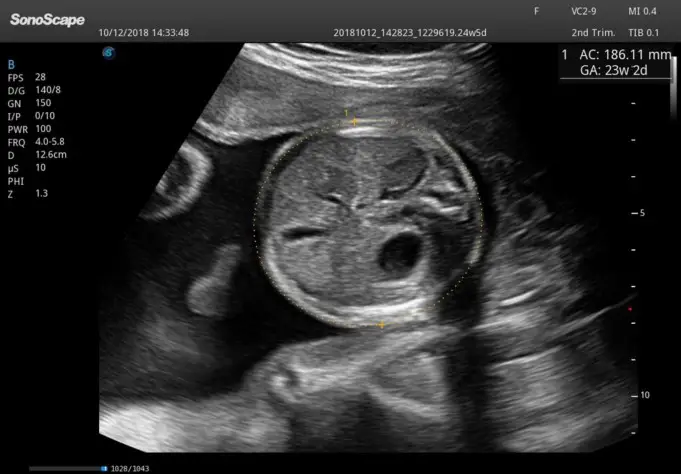Obstetric ultrasound is used to monitor a pregnant woman and her unborn baby. It is a painless imaging method that helps to produce the images of the fetus and ovaries as well as the uterus of a pregnant woman.
During the obstetric ultrasound exam, the doppler ultrasound method may be adopted as well to evaluated the blood flow in the placenta, fetus and umbilical cord. Obstetric ultrasound does not use radiation but rather it uses soundwaves to produce images.
Uses/Reasons for Performing an Obstetric Ultrasound
The most common uses of obstetric ultrasound are to help with the evaluation of;
- Estimating the age of the pregnancy.
- Evaluate the position of an embryo.
- Check for the placenta and its position.
- Detect the presence of an embryo whether it is living or dead.
- Check for multiple pregnancies.
- Evaluate and diagnose abnormalities of an embryo.
- Check for cervix opening or shortening.
- Assess the well being of a fetus.
- Assess the growth of the fetus.
- Determine the amount of amniotic fluid around the fetus.
Who Performs the Obstetric Ultrasound
Obstetric ultrasound is performed by an ultrasound technologist or technician. A diagnostic radiologist or sonographer is a medical professional who is trained to interpret ultrasound images.
They specialize in interpreting medical imaging tests including MRI scans, ultrasound, and CT scans.
Procedures of an Obstetric Ultrasound
Obstetric ultrasound is performed in a hospital. The procedure of the obstetric ultrasound takes less than 30 mins generally. Steps include;
- Laying down on your back on a table in the ultrasound room which usually has dark or dimly lighted, to enable easy reading of the ultrasound images on the ultrasound screen.
- A special water-based gel will be applied to the area under examination to reduce friction and help the transducer slide across your skin. It is the transducer that sends and receives sound waves to produce the image on the ultrasound screen.
- The technologist will move the transducer back and forth on your belly while looking at the screen to capture images of one or more frames of the moving fetus.
- The technologist will occasionally press the transducer down. While he’s doing this, you might be asked to hold your breath or change your position for a short while. This will enable the technologist to have a clear and improve imaging that will help diagnose your condition.
- The water-based gel is then wiped off from your skin.
- You may be asked to wait for a short while. Then the diagnostic radiologist will check if the imaging was complete.
- After an imaging test, the patient is usually asked to go home.
What you may experience during and after an obstetric ultrasound
During an obstetric ultrasound, you may experience minimal and temporary discomfort as the transducer is pressed against your skin.
You may also experience minimal and temporary discomfort if transvaginal ultrasound is recommended. This is because the transducer will be inserted into the vagina.
After an obstetric ultrasound
After an obstetric ultrasound is complete, you will be asked to dress and sit for a while as the result is being reviewed.
You may be given the results or asked to return to the hospital in a few days.
You should be able to resume normal activities after an ultrasound scan.
Merits/Benefits of Obstetric Ultrasound
Some known benefits of breast ultrasound are listed below:
- It is not painful although it may be uncomfortable temporarily.
- It is noninvasive which means that there are no injections or needles.
- It is a preferred imaging method to monitor a pregnant woman and her unborn baby.
- It is less expensive and easy to use compared to other imaging methods.
- It can help the doctor to give more detailed information about the pregnancy.
- It is widely available compared to other imaging methods.
- It is completely safe and it uses sound waves, not radiation.
- It provides a more clear picture of soft tissues that did not show up clearly on the x-ray.
Demerits/Limitation of Obstetric Ultrasound
Though the ultrasound scan is painless and has no known harmful effect on the human body, it has a few limitations. These limitations include;
- Not all fetal abnormalities can be identified.
- When some certain abnormalities are suspected, the pregnant woman may be asked to undergo a nonradiologic test(blood test) to help evaluate conditions such as chorionic villus sampling.












